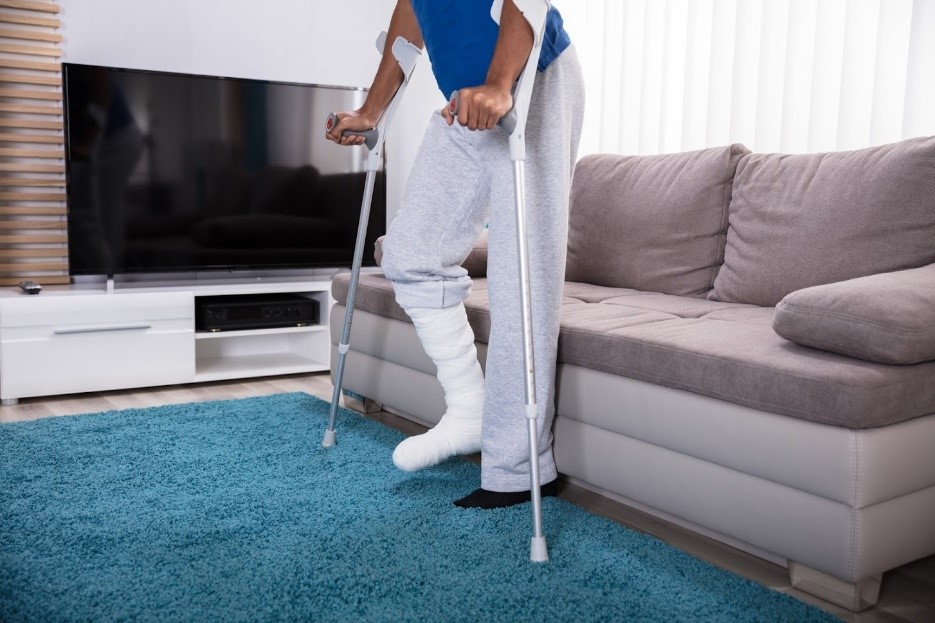Blog
Frequently Asked Questions About Crutches

An estimated 6.1 million Americans use mobility devices such as walkers, canes, and crutches to help them get around. If you have suffered a debilitating injury or another health event that affects one of your legs or feet, your doctor may prescribe crutches as an essential mobility aid, either temporarily or on a long-term basis.
Newcomers to the world of crutches can find their selection, fitting, and safe use somewhat confusing and challenging. If you share their puzzlement, bring your knowledge up to speed by checking out the following frequently asked questions (and answers) about crutches.
When Do People Need Crutches?
Crutches typically see use in acute injuries to weight-bearing structures, such as a fractured foot, leg, or ankle. Doctors also prescribe them to patients recuperating from surgery to a damaged or ailing lower extremity, or to individuals coping with a neurological condition such as a stroke that impairs their use of one leg.
Crutches provide safe, reliable support only for people who have sufficient strength, balance, and stability to use them correctly. If you have a balance disorder or have lost the safe use of both lower limbs, your doctor will prescribe a wheelchair, walker, or other mobility aid instead of crutches.
What Kinds of Crutches Should You Consider?
The primary types of crutches available for consideration include underarm (or axillary) crutches and forearm crutches. Underarm crutches consist of a set of adjustable components that extend up to the armpit in a straight line. Forearm crutches, which reach only up to elbow level, extend from your body to the ground at a slight angle.
Underarm crutches usually make a better choice for people with relatively low upper-body strength and require less of an initial learning curve. However, they can cause discomfort in the armpits, hands, and wrists. Leaning on these crutches too heavily can compress nerves, causing numbness or weakness in your shoulders.
Forearm crutches often prove more comfortable than underarm crutches, although your hands may still feel sore after using them. They also allow you to maintain a straighter posture and move more confidently over uneven ground. However, you may also find them more challenging to use at first.
Some people need two crutches for stable support, while others can get away with just one. The use of a single crutch requires you to bear at least some weight on the affected leg or foot. If you cannot do that without endangering yourself or aggravating your injury, you must use two crutches.
What Preparations Will Your Crutches Require?
Crutches typically come in a few different basic sizes, with each size permitting a certain degree of adjustment. When shopping for crutches, pay attention to specifications such as minimum height, maximum height, and maximum weight capacity. Underarm crutch pads should come up to one or two inches below your armpits.
Crutches usually come with armpit or forearm padding as well as rubberized feet. Even so, you may want to purchase some replacements for these accessories in case your included accessories grow loose, sustain damage, or go missing.
How Do You Navigate With Crutches?
When walking, move both crutches forward in unison, alternating with your healthy leg to take short steps. When getting from a chair, grip both crutches with one hand and the chair armrest with the other.
Stairs can present a potentially dangerous challenge for crutch users. When ascending, plant your crutches securely at your current level and place your healthy foot on the next step. Shift your weight to the healthy foot, and then raise your crutches to join it on the step. Alternatively, if you have a handrail, you can use it for support.
Going downstairs can present even more of a danger than going up. Again, if you have a handrail, you can use it for support as you hop down the stairs on your good leg, with your other hand gripping both crutches. You can also plant both crutches on the stair below as you hop down to each step.
Corner Home Medical can provide you with the ideal underarm crutches, forearm crutches, and crutch accessories for your needs. See for yourself by taking a look at our online store.
